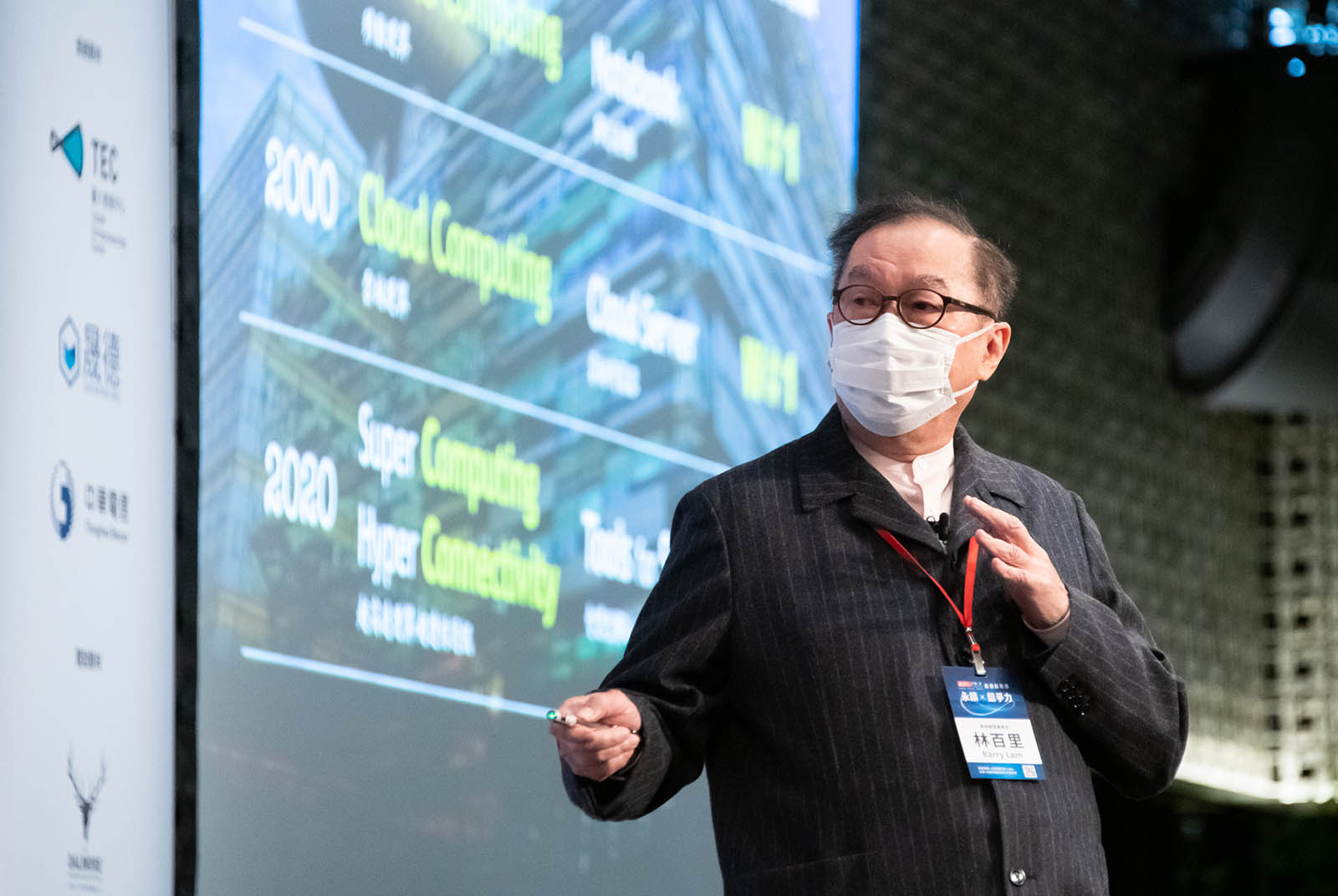Barry Lam: How to tap the first metaverse generation?

Source:Chien-Tong Wang
Barry Lam, the founder and chairman of Quanta Computer, has never stopped learning, from desktop computers to notebooks, from cloud computing to smart technologies. How can Quanta continue to innovate? At the CommonWealth Economic Forum (CWEF) 2022, Lam let the audience in on his secret to ceaseless innovation.
Views
Barry Lam: How to tap the first metaverse generation?
By CommonWealth Magazine Editorial DepartmentFrom CommonWealth Magazine (vol. 741 )
During the pandemic, remote teaching, shopping, and medical care have become normal, and everyone has more or less gotten used to it. Many customers believe that this lifestyle will continue also after the pandemic, and that the electronics industry will thrive further.
This great boom ahead hinges on whether Taiwan’s strong R&D and innovation capabilities continue to be acknowledged by the world.
How can companies continue to innovate? Today, I want to share with you a few things that we did in the past and a few things that we want to do in the future.
From #1 in notebooks to #1 in cloud computing
Quanta Computer was founded in 1988, and its development over the past 33 years can be separated into three stages:
Stage 1, 1988: Mobile Computing
Back then I thought computing should be a mobile tool and not relegated to the desktop. That’s why we made notebooks. No one believed in that, but we persisted for seven years before we actually generated some business.
Today, we are still the largest notebook manufacturer in the world. Before, some people suspected that the iPad would replace notebook computers. After the pandemic, we found to our surprise that demand for notebooks has grown even stronger.
Stage 2, 2000: Cloud Computing
Computing is no longer mobile but is located in the cloud. When we studied cloud servers at MIT, many people doubted that the cloud could be used, but we firmly believed [in this technology].
Quanta Computer also managed to become the world’s largest cloud server manufacturer.
Stage 3, 2020: Super Computing, Hyper Connectivity
Thanks to the 7nm and 3nm process technology by Taiwan Semiconductor Manufacturing Company (TSMC), the cost of cloud computing has continued to come down. Subsequently came 5G, and now there will be also 6G, which are hyper connectivity telecommunications. We have smart solutions such as smart transportation and smart medical care.
The metaverse of Gen Z
Currently, the metaverse is a hot topic, which creates new challenges. The key technology is [immersive digital] environment simulations. Using AR and VR teams, you can hold meetings and check out homes; all this can be simulated. Interaction in the metaverse can create many new opportunities, new applications, and new business opportunities for everyone.
What does the new economy of the metaverse look like? The name itself sounds very far away. Gen Z, those born between 1997 and 2015, people under 25, are true digital natives, and their mobile first ratio stands at up to 90%. They are online on their smartphones for more than four hours per day. This made Facebook very nervous, as its original users had grown old. Facebook needs to quickly get hold of Gen Z. How do these people think?
Behavior trends among Gen Z can be categorized as follows: evolving from “storytelling” to “storymaking”, from “spokespeople” to “virtual humans”, from “direct to consumer” to “direct to avatar”, from “experiences” to “massive interactive live events”, and from “fast fashion” to “virtual fashion”.
I really like works of art. There is a piece of virtual artwork that sold for NT$1.95 billion. The moment the piece was completed, the artist obtained an NFT (non-fungible token). There will be many more new things happening, a lot of everyday entertainment is going to take place in virtual worlds.
Two platforms to lead the metaverse
Facebook has changed its name to Meta and will undertake massive investments in the future, focusing on your leisure time, whereas Microsoft Teams is about work time. The metaverse consists of these two platforms.
This is a major trend that Quanta Computer also needs to catch up with. In the past, we made computers. We managed to make them lighter and thinner, shorter and smaller, and less energy-consuming, but now it's no longer about how much power your machine conserves or how much smaller it is; you need to come up with solutions, you need to make more.
We are using a three-stage strategy for innovation, from “compute to computing to solution”, from server to cloud to smart solution tools to advance toward the metaverse.
Quanta has many BU (business units). In the past, these BU focused on product design and business development, but these no longer suffice. For our future business, we do a great deal of research.
Human behavior is changing. Since Taiwan has always been doing contract manufacturing, understanding behavior change is somewhat more difficult. For us, this has turned out to be a massive challenge.
When making computers with smaller dimensions in the past, you only needed to find thinner parts to be able to deliver. Now you are busy touring hospitals, not to see a doctor but to understand what kind of machines the physicians need, because physicians and engineers don’t speak the same language. Previously, the thought process started with the production of parts; now we need to work backwards from the need to deliver smart medical care and figure out what kind of parts are required [to achieve that].
In the past, the things we did were an achievement. Regarding what we do now, we have a responsibility, and regarding what we do in the future, we have a mission. In the past, my mission was complete when I performed well regarding the knowledge that my teachers at the electrical and electronic engineering department taught us.
Translated by Susanne Ganz
Uploaded by Penny Chiang






